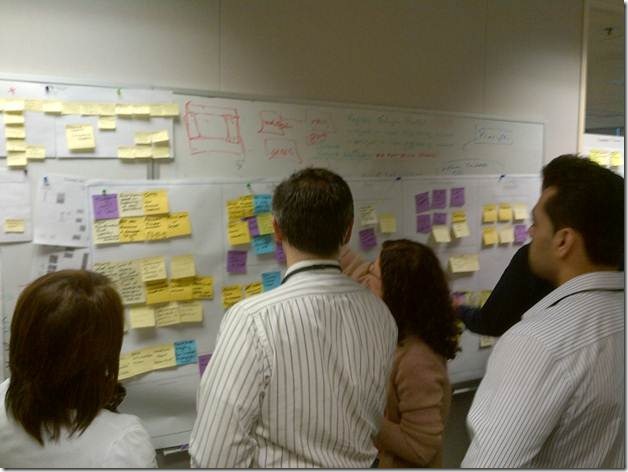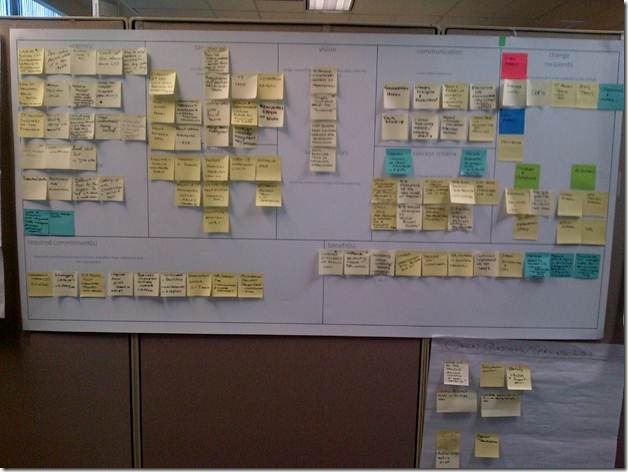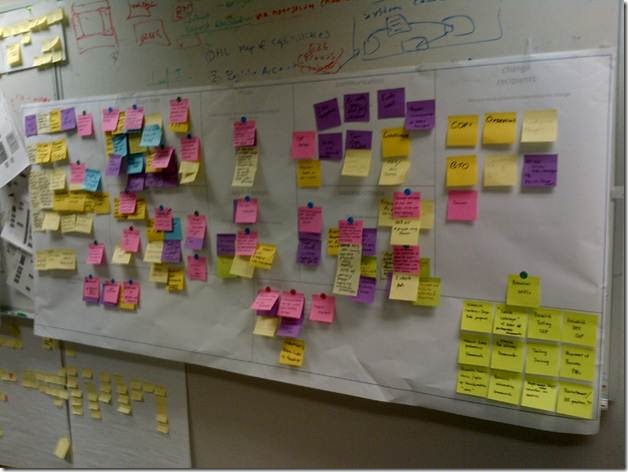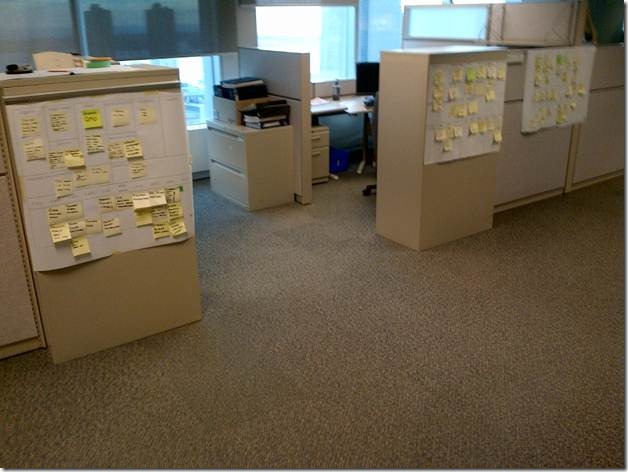Plan Change in a Cocreative Way
Perhaps one of the most important considerations when building a change canvas is to make sure that it's done in a cocreative fashion. You want to ensure that change recipients, and other change stakeholders work closely with change agents to come up with a change solution together. The canvas supports a collaborative environment, but it is up to the facilitator and workshop participants to take advantage of this tool. Below is a great example where we worked with our client to brainstorm a potential change.

Expect Your Change Plan to Be Wrong
The change canvas is easy to build, easy to modify, and easy to tear down if it turns out to be completely wrong. It still takes a combination of courage, introspection, and discipline to take the time to modify elements of a change plan when we discover that they are incorrect. Change planning is really hard to do, and most assumptions behind any initial change model will never be right up front. Expect the change canvas to require revision and require it frequently. Shown below is a minimum viable change canvas annotated for correctness. The change team's latest learnings have been incorporated into the canvas, showing red for incorrect assumptions, and yellow for only partially correct assumptions.

Use the Change Canvas As an Information Radiator
Where possible, try to favor representing the change canvas using physical, low fidelity artifacts that can be placed in a highly visible place, frequently trafficked by members of the organization. We want to encourage maximum exposure to our change model and plan, and receive the maximum amount of feedback from as many sources as possible.

Keep the Content of the Canvas Light Weight and Informal
While the change canvas contains all the components of a complete change model, content within the canvas should be succinct. We want to avoid getting lost in the details, providing key information at a glance. Things need to be lightweight if we want to be able to make changes as we incorporate new learnings over time. The canvas shown below may look chaotic and unfinished at first glance, but in reality a wealth of information is conveyed, and can be collaborated on in real time.

Limit How Much Change You Introduce at Any One Time
When decomposing a minimum viable change into a number of improvements experiments, it is important to limit how many of these improvements experiments you introduce to the organization. It is very easy for change recipients to become overwhelmed with change. Negotiate a reasonable work in progress limit that balances the need for improvement with actual capacity for change within the organization. The minimum viable change on the canvas below has an agreed-upon change in process limit to 3 experiments every two weeks.

Place the Change Canvas As Close As Possible to Where Change Recipients Work
As soon as a change canvas is started, place it as close as you can to wear most of the change recipients work. This encourages change recipients to look at the model in their own time. We also want to encourage ownership of the change model by these change recipients.

Think Visually, Use Pictures to Enhance Communication
Because the canvas is compact there isn't room to write a lot of detail. But a simple picture can convey a lot of meaning. Artistic excellence is not required, simply the willingness to put things down in picture form using whatever skills are available! Below is a real-world example where our client used some visual thinking to help articulate the vision for their department.

Read More of Lean Change - Chapter 2: Getting Started with the Change Canvas
No comments:
Post a Comment